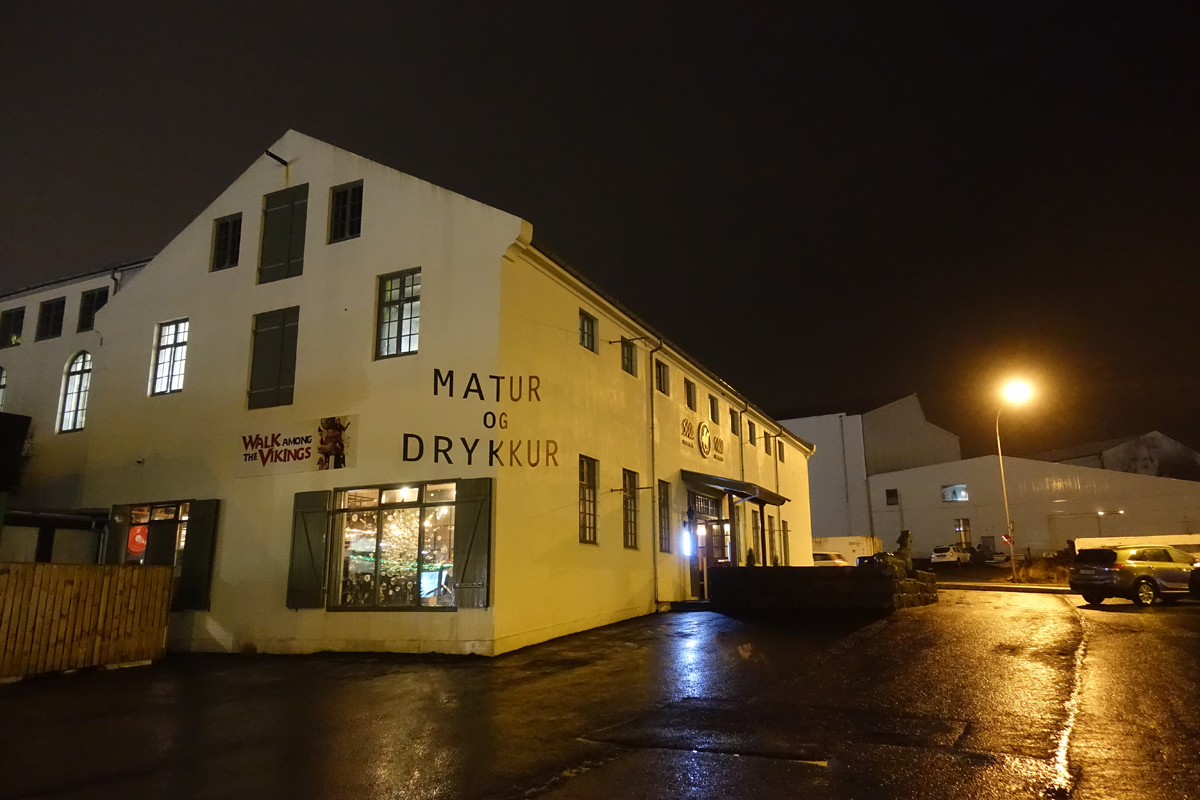Kæstur hákarl
One food you cannot ignore when in Iceland is Kæstur hákarl or fermented shark. It shows to what great lengths the Icelandic people would go to make potential food edible in times of scarcity.
The shark used for hákarl is Greenland shark (Somniosus microcephalus), whose flesh is toxic to humans because of the presence of high concentrations of urea and trimethylamine oxide (TMAO). But if you press out the fluids and let the meat ferment for 6-12 weeks and then dry the meat for several months, the meat becomes edible. In the olden days (think: Vikings!) the meat would be buried and the sand was used as a weight to press out the fluids. If you do eat the meat fresh you get ‘shark drunk’. I wonder how bad this can feel, is it similar to taking in an extreme amount of alcohol or hallucinogenic drugs?
I had hákarl in Café Loki as part of a mini Þorramatur with rúgbrauð, hákarl, harðfiskur (wind-dried fish) and brennivín. Brennivín is made from fermented grain or potato and flavoured with caraway and was introduced in Iceland after the prohibition ended in 1935. The Vikings would certainly not have drunk brennivín with their hákarl.
Kæstur hákarl does smell of ammonia but the taste is not so bad at all. I even liked it and was sorry my plate only contained four pieces. By the way, Gordon Ramsay is a pussy.




















